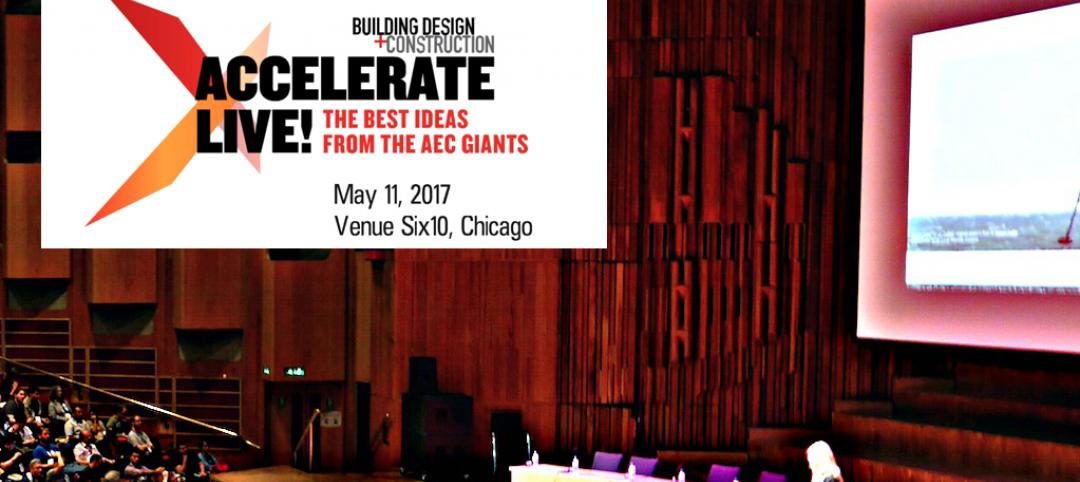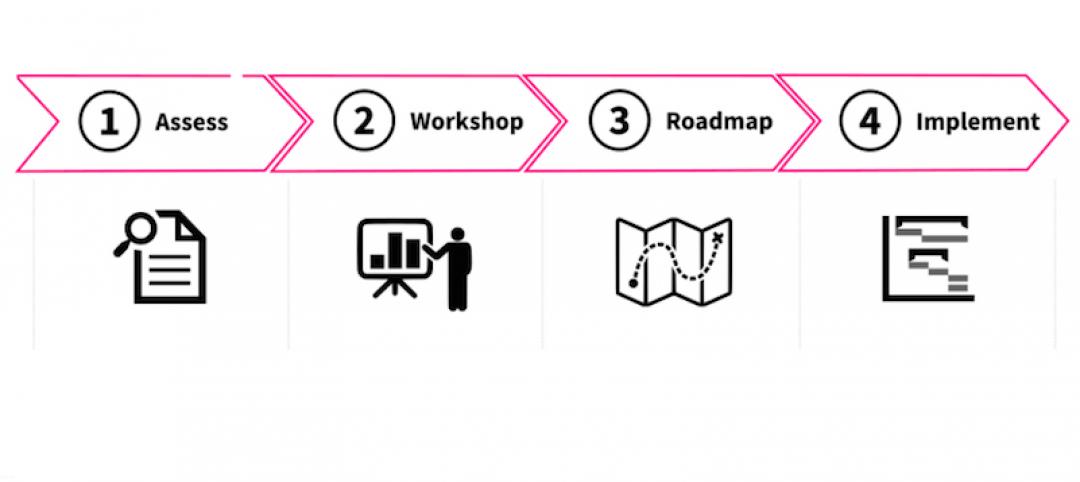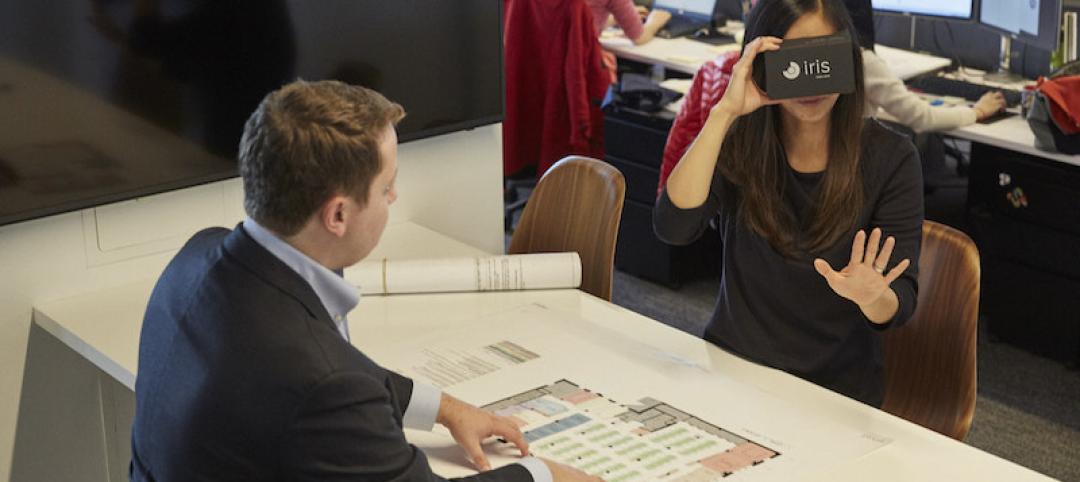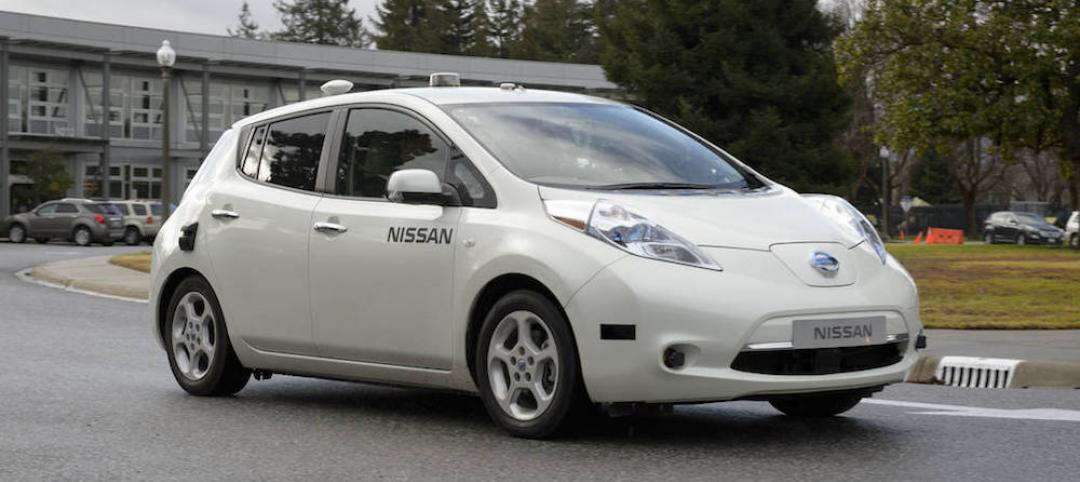Last month, I wrote about how automation and AI are dramatically changing all four fundamental relationships between buildings and machines. For example, nanotechnology, which manipulates individual atoms and molecules to assemble things, could make the modernist metaphor of a “machine for living in” into reality, since the building would actually be composed of many tiny machines.
In fact, that’s not quite accurate. The definition of “machine” is “an apparatus using or applying mechanical power and having several parts, each with a definite function and together performing a particular task.”
So machines are made of distinct parts, cobbled together to fulfill a function. They are characterized by their composition, as assemblages of singular bits and pieces in which the whole is greater than the sum.
SEE ALSO: Assessing AI's impact on the AEC profession and the built environment
But nanotech will completely change this. When entire buildings can be shaped from microscopic components, the visible distinction between the individual parts will evaporate. A structure built from invisible machines will not appear to be a machine at all, since it no longer will be perceived as an assembly of parts. An edifice made of congealed cybernetic butter will look to be all whole, no parts. The very concept of a “building” could become meaningless, since it will no longer be “built” in any traditional way.
Remember “Terminator 2”? Arnold Schwarzenegger’s T-800 is a machine: steel and servos wrapped in human skin. Robert Patrick’s T-1000 is made of liquid metal (“mimetic polyalloy”). He’s like sentient mercury, morphing into any shape he needs. A nanotech building (“nanotecture”?) would make conventional structures seem like Robby the Robot (of “Forbidden Planet” fame).
Buttery buildings could change everything we think and know about architecture. Frank Lloyd Wright felt that architectural form should stem from the inherent “nature” of its materials: “Each material speaks a language of its own.” In his mind, the proportions, heft, and texture of brick logically translated into structures such as the Robie House, which extends horizontally and hugs the land. But when the constituent parts of a building are too small to be seen with the naked eye, the relationships between form and materials will change. What is the “language” of a nanobot?
Because the character of a building could vary upon command—hard and opaque one minute, soft and transparent the next—the fabric of buildings could become fluid, fluctuating states from solid to liquid to gas and back. The notion of truth in materials will become irrelevant. In fact, the word material could go away. When the basic building blocks of architecture have no strict definition, structure and substance could separate. Matter may not matter.
Could there come a time when buildings will become less about bricks and mortar and feel more like mists or fogs, vaguely enveloping space in ways we can barely picture now? What will it be like to live in a cloud?
Lance Hosey, FAIA, LEED Fellow, is a Design Director with Gensler. His book, The Shape of Green: Aesthetics, Ecology, and Design, has been an Amazon #1 bestseller in the Sustainability & Green Design category.
Related Stories
AEC Tech | Feb 16, 2017
Positioning computational designers in your business: 4 things to consider
There appears to be very little industry consensus as to what a ‘computational design’ position actually means in a business setting.
AEC Tech | Jan 30, 2017
Building Design+Construction launches Accelerate Live! AEC innovation conference
This fast-paced forum will showcase 18 business and tech visionaries from AEC Giant firms, who will explore the future of the AEC industry and the changing built environment.
| Jan 24, 2017
BD+C Accelerate Live! AEC Innovation Conference
Building Design+Construction's inaugural Accelerate Live!
AEC Tech | Dec 22, 2016
The success of your data strategy depends on healthy business practices
Data and digital tools are an absolute given to today’s building design and construction process. But creating a true data-driven workflow requires more than just a solid strategy, writes Proving Ground’s Nathan Miller.
AEC Tech | Dec 18, 2016
Customized future weather data now available for online purchase
Simulation tool, developed by Arup and Argos Analytics, is offered to help owners and AEC firms devise resilience strategies for buildings.
Virtual Reality | Nov 16, 2016
Converting 3D model files to VR, with one click
IrisVR offers two new products to simplify and enhance the application of virtual reality for designing projects.
AEC Tech | Sep 6, 2016
Innovation intervention: How AEC firms are driving growth through R&D programs
AEC firms are taking a page from the tech industry, by infusing a deep commitment to innovation and disruption into their cultural DNA.
Hardware | Aug 11, 2016
Kyocera introduces the DuraForce PRO, a rugged smartphone equipped with an HD action camera (UPDATED)
The Super Wide View HD Action Camera and rugged design allow users to capture their adventures on land, air, or sea.
AEC Tech | Jun 27, 2016
If ‘only the paranoid survive,’ what does it take to thrive?
“Sooner or later, something fundamental in your business world will change.” The late Andrew Grove (1936-2016), Co-founder of tech giant Intel Corp., lived by these words.
AEC Tech | Jun 17, 2016
Driverless cars could soon start impacting commercial, retail project design
Offsite parking and more space for valet parking lines are among the foreseeable changes.
















